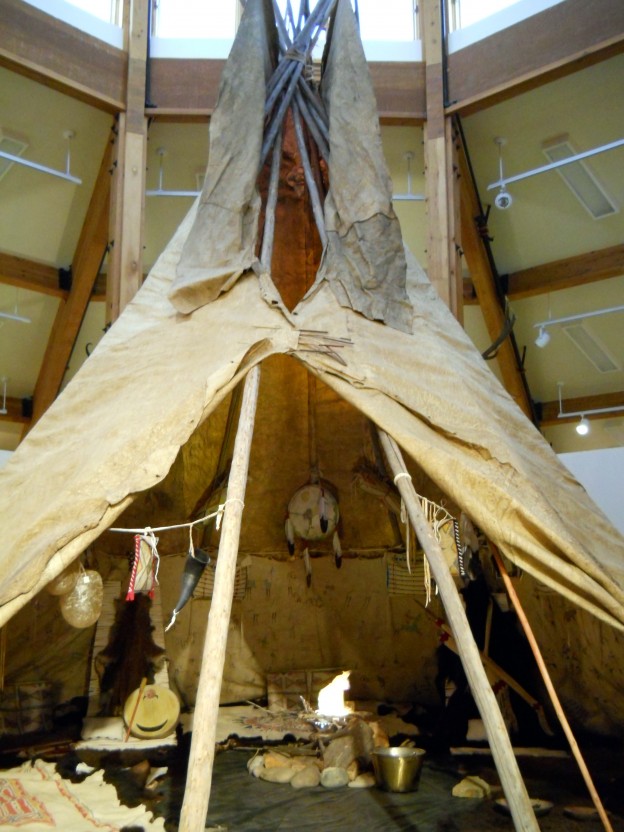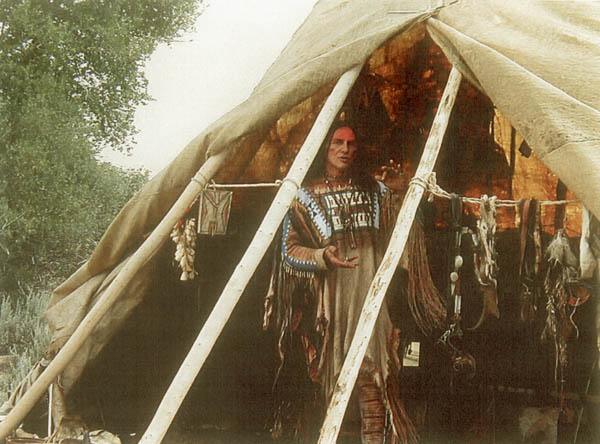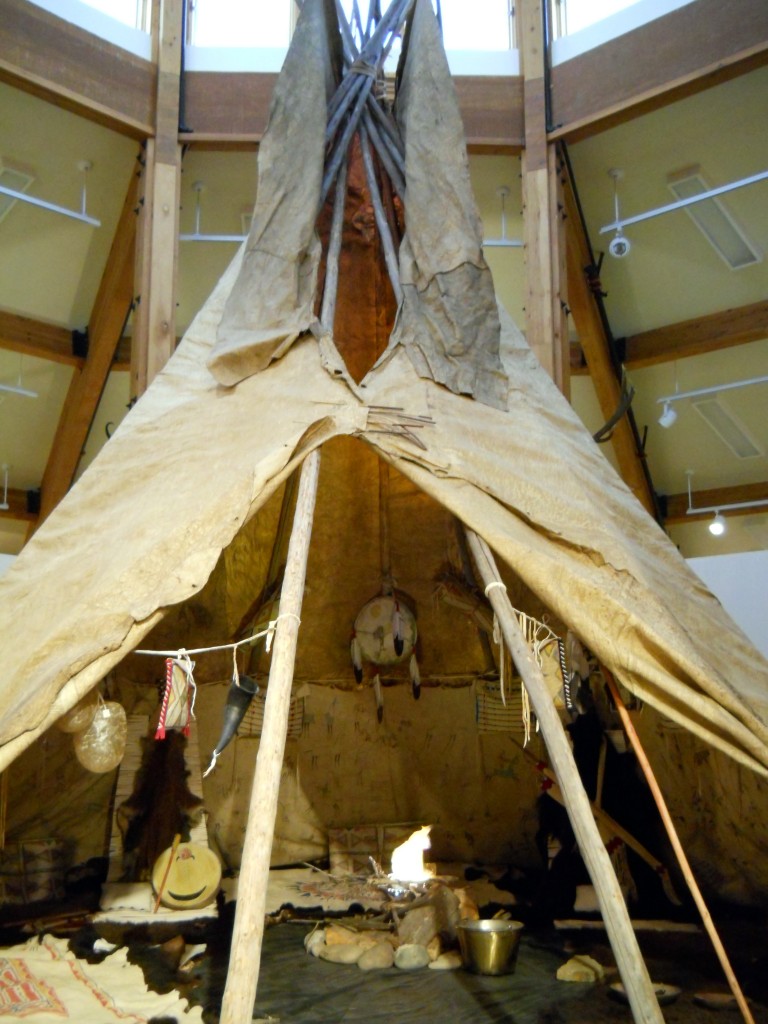One of the highlights of the Museum of the Mountain Man is the full-scale replica of American Horse’s tipi, which stands in the center rotunda of the museum’s main exhibit gallery. The 20′ diameter, brain-tanned buffalo hide tipi is one of the few buffalo-hide tipis in existence today, and one of only two on display in museums. This display comes complete with furnishings, buffalo robes, utility bags, hand-painted drum, parfleches, headdresses, buffalo bull neck shield, bow and arrows, elaborately painted buffalo hide liner, war lance, pipes, Indian kitchen, and much more. This exhibit is a donation from Gayle McMurry Kinnison through her Wyoming Community Donor Advised Endowment.
The U.S. Army captured the original buffalo hide tipi on September 9, 1876, following the Battle of Slim Buttes, South Dakota, against the Sioux. The tipi belonged to Chief American Horse of the Oglala Sioux, who had fought in the Battle of Little Bighorn against General Custer on June 26, 1876. Captain Anson Mills, who led his cavalrymen to victory at Slim Buttes, captured the tipi and many battle trophies that American Horse had taken from Custer at Little Bighorn, including the 7th Cavalry flag. After the Battle of Slim Buttes, frontier photographer Stanley J. Morrow photographed captured Sioux women and children and the 7th Cavalry flag in front of the tipi. Captain Mills claimed the tipi as spoils of the battle, and it remained in his family until finding its final home at the Smithsonian Institution.
The original American Horse tipi is one of only thirty-two surviving buffalo hide tipis from the nineteenth century, and one of only four used prior to the reservation era, making it a rare national treasure.
Native American historian Michael Bad Hand created a full-scale tipi for the Museum of the Mountain Man as an authentic replica after carefully studying the artifact at the Smithsonian Institution’s storage facility in Suitland, Maryland. He duplicated each stitch, patch, and measurement of the original, which the Smithsonian considers too fragile to display. Terry used twenty buffalo hides and painstakingly sewed them together by hand with sinew. The replica is twenty feet in diameter, just like the original, making it the largest buffalo hide tipi on exhibit in the world.
The beautiful replica is one of the museum’s crown jewels, and is decorated with reproduction furnishings and accoutrements typical of the tribe during the period.
The tipi makes an excellent backdrop for a family photo. Make sure to snap a shot during your visit to the Museum of the Mountain Man.



